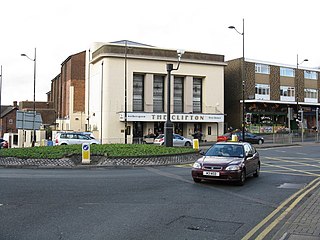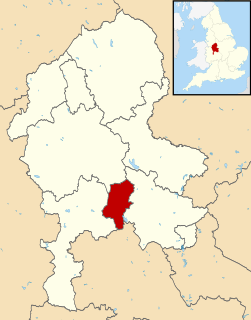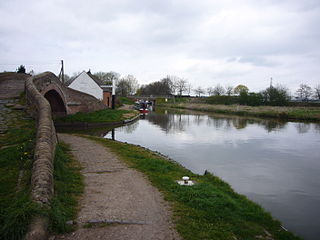
Sedgley is an area in the north of the Metropolitan Borough of Dudley, in the West Midlands, England.

Cannock Chase is a local government district in Staffordshire, England. Its council is based in the town of Cannock; other notable towns are Rugeley and Hednesford. The district covers a large part of the Cannock Chase Area of Outstanding Natural Beauty, from which it takes its name.

The Chase Line is a suburban railway line in the West Midlands region of England. It runs from its southern terminus, Birmingham New Street, to Walsall, and then Rugeley in Staffordshire, where it joins the Trent Valley Line. The name of the line refers to Cannock Chase which it runs through at its northern end.

Sanderson Miller was an English pioneer of Gothic revival architecture and landscape designer. He is noted for adding follies or other Picturesque garden buildings and features to the grounds of an estate.

Cannock Chase is a constituency represented in the House of Commons of the UK Parliament since May 2015 by Amanda Milling of the Conservative Party.
Brindley Heath is an area of heath land on Cannock Chase situated between Hednesford and Rugeley in the Cannock Chase District of Staffordshire, England. The area also forms a civil parish, which at the 2001 census, had a population of 862, decreasing to 827 at the 2011 Census.

Great Haywood is a village in central Staffordshire, England, just off the A51 and about four miles (6 km) northwest of Rugeley. Population details taken at the 2011 census can be found under Colwich.
Milford is a village in the county of Staffordshire, England. It lies at the edge of Cannock Chase, on the A513 road between Stafford and Rugeley. Just to the north of the village is the River Sow.

Brocton is a village and civil parish in the English county of Staffordshire. It is within the borough of Stafford. The village describes itself as the Gateway to Cannock Chase, an Area of Outstanding Natural Beauty and a Site of Special Scientific Interest.

Beaudesert was an estate and stately home on the southern edge of Cannock Chase in Staffordshire. It was one of the family seats of the Paget family, the Marquesses of Anglesey. The estate was obtained by William Paget, 1st Baron Paget in 1546; the family's other main seat is at Plas Newydd.

Brocton Football Club is a football club representing Brocton, near Stafford, England. They are currently members of the Midland League Division One and play at Silkmore Lane in Stafford.

Armitage Park is a 19th-century Grade II listed country house at Armitage near Rugeley, Staffordshire.
Slitting Mill is a small village on the outskirts of Rugeley, Staffordshire, on the edge of Cannock Chase. At the 2001 census, it had a population of 265.

Cardinal Griffin Catholic College is a mixed Voluntary aided Catholic Secondary school and Sixth form college in Cannock, Staffordshire, England. Cardinal Griffin is a Specialist Science College.
Fair Oak Academy is a mixed secondary school located in Rugeley in the English county of Staffordshire.


















